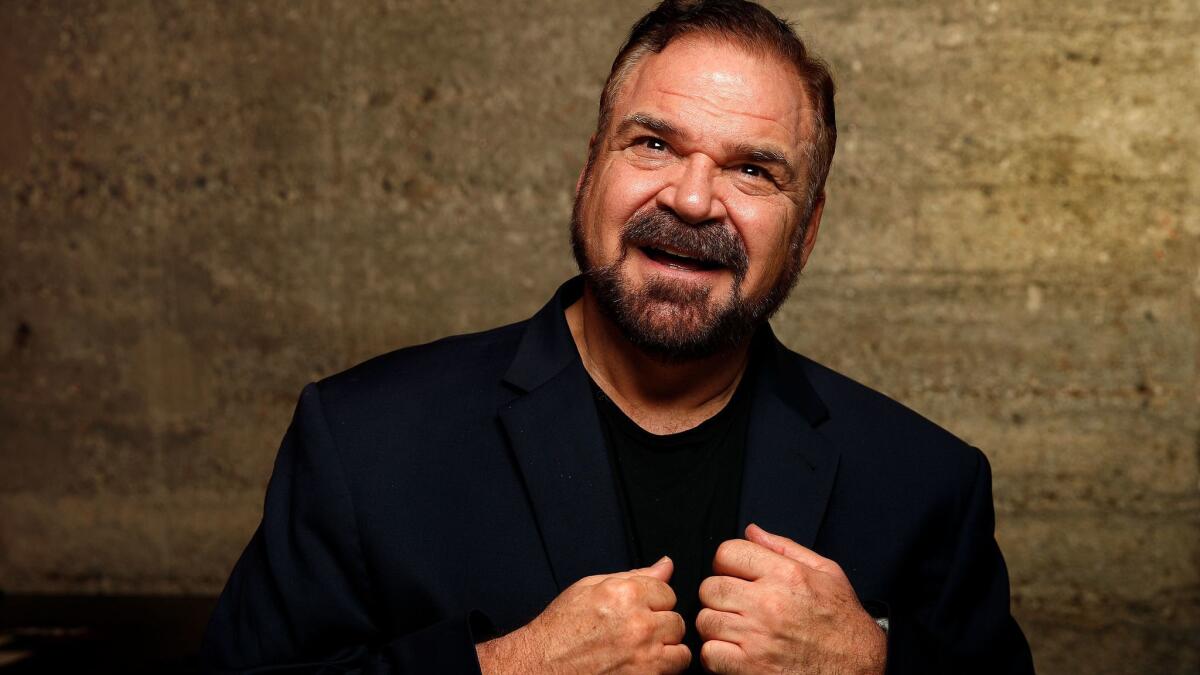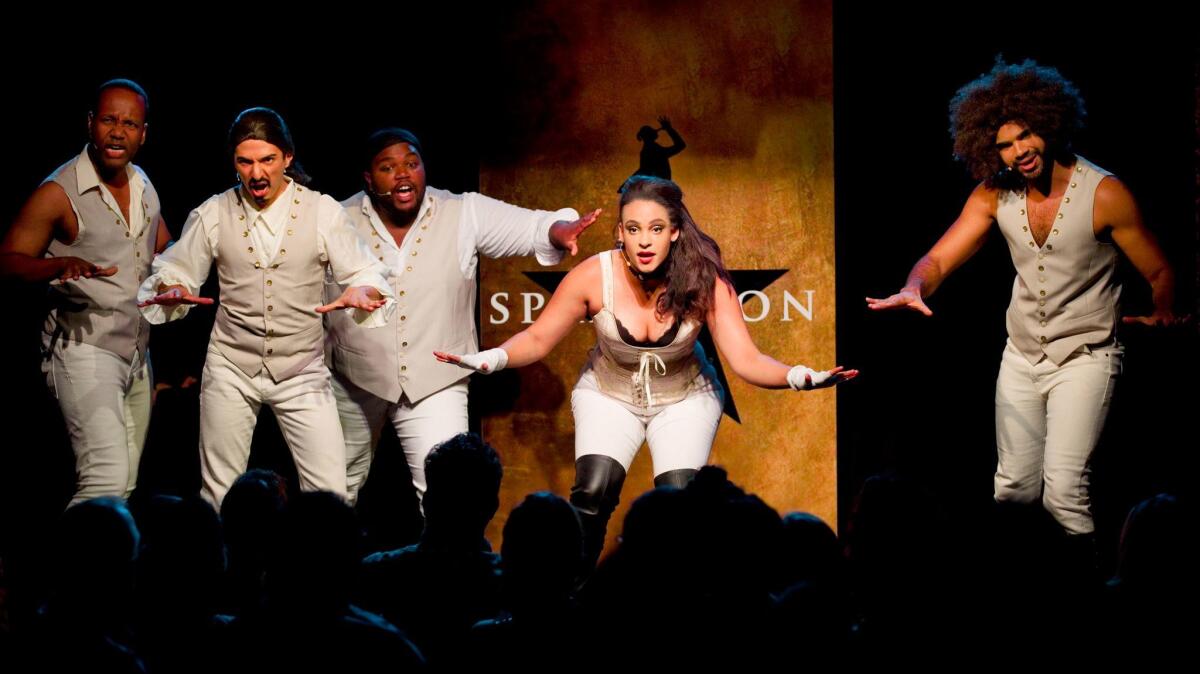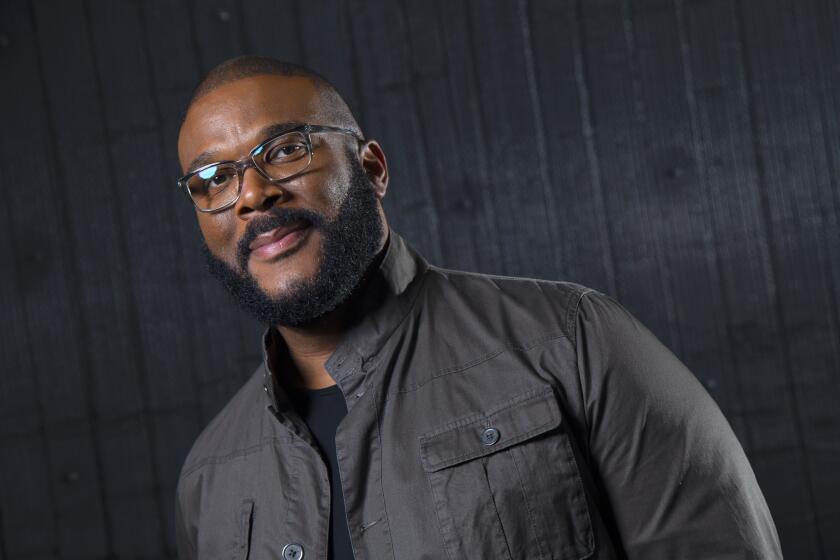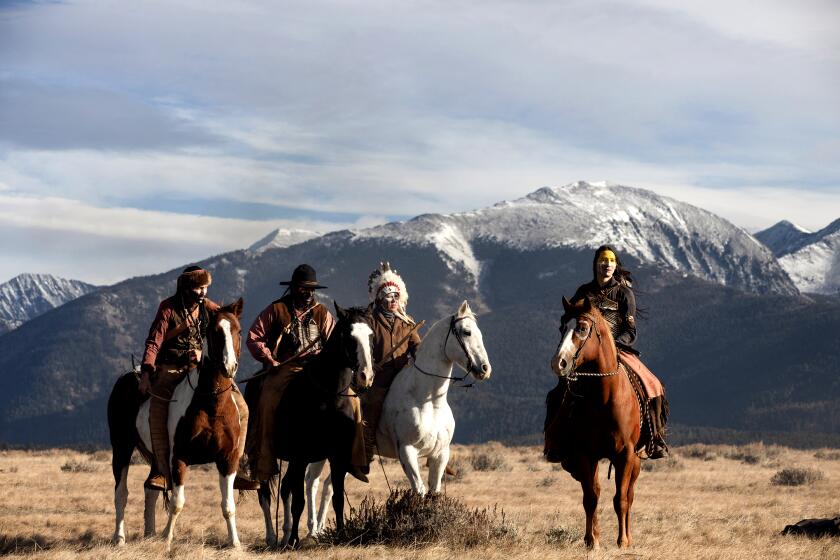Q&A: ‘Spamilton’ creator on loving Lin-Manuel Miranda and spoofing his musical at the same time

- Share via
When Gerard Alessandrini sees a musical he likes — or loathes — he just can’t stop himself from substituting a few of his own lyrics. The writer and director has done it professionally since 1982, the year of his first “Forbidden Broadway” revue, parodying some of the best — and worst — tunes for generations of theater-goers.
When “Hamilton” mania swept the country, Alessandrini, 63, decided that a spoof of a song or two wasn’t enough this time. So, working quickly, he turned out “Spamilton,” a mash-up of “Hamilton” parodies and new takes on some of his “Forbidden Broadway” favorites. Actors playing “Hamilton” creator
Plying what the soft-spoken, unassuming Alessandrini has called “mischievous inspiration,” “Spamilton: An American Parody” emulates “Hamilton: An American Musical” through costumes, music, smart lyrics and vocal arrangements, multicultural casting, hand gestures and more. Even their logos are similar (except that Alessandrini’s Founding Father is thumbing his nose).
After starting on New York’s Upper West Side more than a year ago, “Spamilton” has moved closer to its inspiration, landing just a block away from the Richard Rodgers Theatre, where “Hamilton” is playing. A second incarnation ran in Chicago for seven months, and now comes the Los Angeles production, opening at the
You refer to “Spamilton” as a realization of your “wildest musical-comedy dreams.” How did it happen?
Here comes this show, “Hamilton,” that’s the biggest hit I have seen since I’ve been in New York, and I’ve been here more than 30 years. It’s a serious drama about American history, and it had current-day political implications. It was also the big new serious show on Broadway and cast Broadway in a different light. There was a lot to spoof there.
“Hamilton” also brought back the idea that musical theater can be fresh and tell you a story in a new way. It shined a new light on Broadway and made everything else look different. You don’t have to be a jukebox musical. You don’t have to be a revival.
How did you get from Alexander Hamilton as the central figure to Lin-Manuel Miranda as your central character?
I wanted to not tell the story of “Hamilton,” because they tell it very well. I would tell a fantasy story about Lin-Manuel trying to invent something that would freshen up Broadway. I knew from the beginning that if I was going to spoof “Hamilton,” I had to have a through-line. When you’re searching, you’re constantly going forward. So I thought, let’s have Lin-Manuel search for a better Broadway.
“Forbidden Broadway” and “Spamilton” highlight your love of Broadway and worry for its future.
I don’t always love Broadway. I love Broadway at its best. I don’t like Broadway when it’s mediocre. Sometimes I see a show and I get very discouraged because I think who gave these people $10 million to put this show up onstage? But then there are the great shows that are inspirational, the ones that transcend their era.
That leads us to your parody of “My Shot,” the “Hamilton” anthem that has Alexander Hamilton singing, “I am not throwing away my shot!”
I struggled with that parody. It’s the big home run at the beginning of “Hamilton” — the “I am” song. I wanted it to be a parody, but I wanted to use that rhythm, and it was hard to come up with something that was exact and funny. At one point, we were joking and came up with, “I am not throwing away my pot.” We did use it, but it’s not the thrust of the song. I went with “I am not gonna let Broadway rot.” That’s something I would believe in, and it fit.
The “I want” I gave Lin-Manual is actually myself superimposed on his psyche. I know Lin-Manuel, and I’m sure he does love musicals, but I don’t know him well enough to know his complete motivations for writing “Hamilton.” It’s sort of a fantasy of what he might be thinking.

It appears you did a lot of research that went beyond seeing “Hamilton.”
Well, Miranda’s book, “Hamilton: The Revolution” helped a lot. His sidebars were fun to use and exaggerate. I had the CD and tons of hours of footage online. I also had to go online and listen to rap artists he was referencing. I taught myself to do some rap, though I’m certainly not a rap expert.
I really felt Lin-Manuel was not just using rap but he was accessing all of musical theater. You could see he knew “Man of La Mancha,” “Camelot” and other historic shows. I could hear that he had a good handle on classical music. “Hamilton” was mostly famous for rap, but there are all sorts of musical forms in there. Tunes like “The Room Where it Happens” are as catchy as anything in a Jerry Herman show.
You graduated from the Boston Conservatory. When did you start doing show parodies?
I started at a young age. I’ve been doing them since grammar school, then in summer stock. I wanted to have fun and make people laugh. Then, around 1981, it came to me that it might be a good idea to do a revue of parodies. I had a folder full of them, which I called “Forbidden Broadway.” We put that together, it hit and I was launched on a career as a parodist. Over the years, I must have parodied every Broadway standard at some time or other. I can look at something and see how to turn it inside out.
But nothing is going to be funny if they aren’t in on the joke with you. What was really wonderful about parodying “Hamilton” is that most people seem to know the score already. So when I change the lyrics, people laugh because they know what the real lyric is. You’re harking back to the days when every household knew the songs from “My Fair Lady” and “The Sound of Music.”
You really moved fast, capitalizing on the peak popularity of “Hamilton.”
The thing about writing any parody is that it’s time-sensitive. It’s topical. “Hamilton” was so hot; it had just won all the awards. So it was the time to do it and to do it fast. I didn’t have years to do it. I started throwing in something from “Gypsy,” then I began adding things from other shows. I just didn’t have the time to thoroughly parody what took Miranda years to write.
How did Miranda react to the show?
He came twice to see it. He wrote two tweets — one was “I laughed my brains out” — and I was really thrilled. He was so nice to the cast. He gave the actors all tickets to “Hamilton.” Those kids couldn’t afford to see it, and it helped them focus “Spamilton” more.
You’re now thinking of a spoof of “La La Land” called “Blah Blah Land”?
Yes, I started writing it, but I put my poison pen aside for a while to direct a revue of Maury Yeston’s music and lyrics called “Anything Can Happen in the Theater.” Now the heat of “La La Land” has worn off, but all these movie musicals will be coming out — “Mary Poppins Returns,” “A Star Is Born” with Lady Gaga. “La La Land” is the jump-off point, and like “Spamilton,” “Blah Blah Land” will be a mash-up of many movie musicals. And there’s always a new “Forbidden Broadway” pending.
♦ ♦ ♦ ♦ ♦ ♦ ♦ ♦ ♦ ♦
‘Spamilton’
Where: Kirk Douglas Theatre, 9820 Washington Blvd., Culver City
When: Begins previews Nov. 5, opens Nov. 12, ends Jan. 7
Tickets: $30-$80 (subject to change)
Info: (213) 628-2772 or www.centertheatregroup.org
Find all of our latest stories at latimes.com/arts.
MORE THEATER NEWS AND REVIEWS:
‘Hamilton’ in L.A. — behind the scenes of the national tour
A devasting revival of ‘Gem of the Ocean’
Carrie Coon, at the top of her game
UPDATES:
10:10 p.m. Nov. 2: This article was updated to reflect an extension of the run to Jan. 7.
The biggest entertainment stories
Get our big stories about Hollywood, film, television, music, arts, culture and more right in your inbox as soon as they publish.
You may occasionally receive promotional content from the Los Angeles Times.







